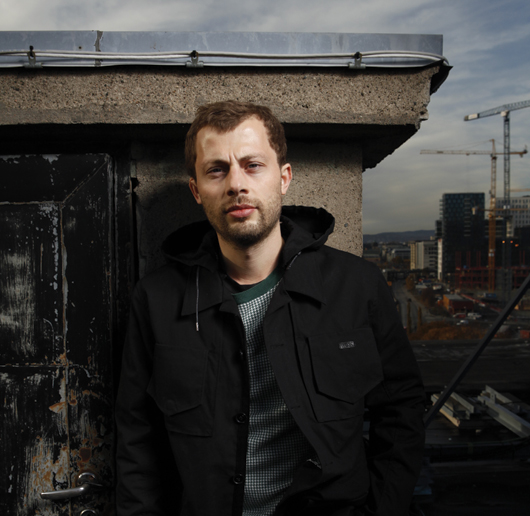Artist Tips: Diskjokke
Oslo-based space-disco producer Joachim Dyrdahl has made a name for himself as Diskjokke with releases […]

Oslo-based space-disco producer Joachim Dyrdahl has made a name for himself as Diskjokke with releases on Prins Thomas’ Full Pupp label as well as Get Physical sub-label Kindish. A classically trained violinist and math whiz, Dyrdahl’s approach to beat-making is best described as holistic, incorporating influences that range from country music to early Italo. Dyrdahl’s second full-length on Smalltown Supersound, En Fin Tid, shows off his dynamism, with ambient moments and white noise as present as the slick disco bass and synth arpeggiations his sound is known for. Below, Dyrdahl gives us a few tips on how to achieve the best reverb and delay, two sonic effects that are indispensable to his cosmic productions.
Record and bounce processed sounds with reverb
Set up the sound you want to use—let’s say a cymbal hit—in a separate track. Add a fantastic reverb to this track, and bounce it as a solo sound with a long reverb time and the dry/wet ratio of your choice. Then import the bounced sound into your project and use it as you wish. Reverse it, chop it, and pitch-shift the parts differently. Use just the reverb and not the signal itself (works better with sounds that have no tail in itself, like a reversed snare or tom), add effects to it, or use it as a substitute for the original track and save tons of CPU capacity.
Play with your dry/wet ratio
Say you want to add a percussion loop to a track, but it stands out too much or does not sound quite the same as the rest, and you’ve given up on EQing it to fit. Slowly fade the loop in all wet so that all you really hear is some sort of rumble, similar to a party next door. Then when this sound is loud enough to get attention, you completely remove the reverb on the first beat of the bar and the party has moved into your room. Another good way to bring out elements of the track is to slowly (say, over 16 bars) go from dry to wet and then cut or fade the signal.
“1987”
Alter volume and panning
This tip is based on having really, really long delay time on a single sound (like a single conga hit). You could also use a more complex signal, but that quickly gets messy. In Cubase, you open the automation track below the actual track and start fiddling. You can play the signal in itself with volume low and then increase the volume of the track as the tune plays along. This enables you to let the sound of the delay go on forever with even a cheap delay device. Then duplicate the track, move the signal in the new track a bit, pan the original track to the left and the new track to the right. By automating the volume up and down, these two delays (or more, if you like) will work together and create a cool effect.
Change your feedback and delay time
By automating/altering these two parameters in your delay box at the same time, you will make the original signal come alive in a very distinct way. I prefer to use this effect on synth lead sounds and vocals, like in my remix of Ost & Kjex’s “Boston Food Strangler,” which then gets more character. Try turning feedback to the max while decreasing the delay time or the opposite. You should consider adding a compressor to the track, as the result could be surprisingly loud and weird here.
Add real reverb
If you have access to a place with good natural reverb, you should bring your gear there, record whatever needs reverb, and put that into your production to add uniqueness. In the stairs that lead to my studio we have fantastic “hall” reverb, so I use that space to record percussion, like claps, shaker, and tambourine. I first record the dry sound in my studio, then I go out into the stairs where I put one microphone near the source and one further up the stairs. Here I record on two tracks, and this gives me the opportunity to mix the three recorded sounds in the project in the same way that you use the dry/wet knob on your studio reverb. This method can be expanded with more microphones, and the recordings will make a great foundation for using all the techniques and tips above.

